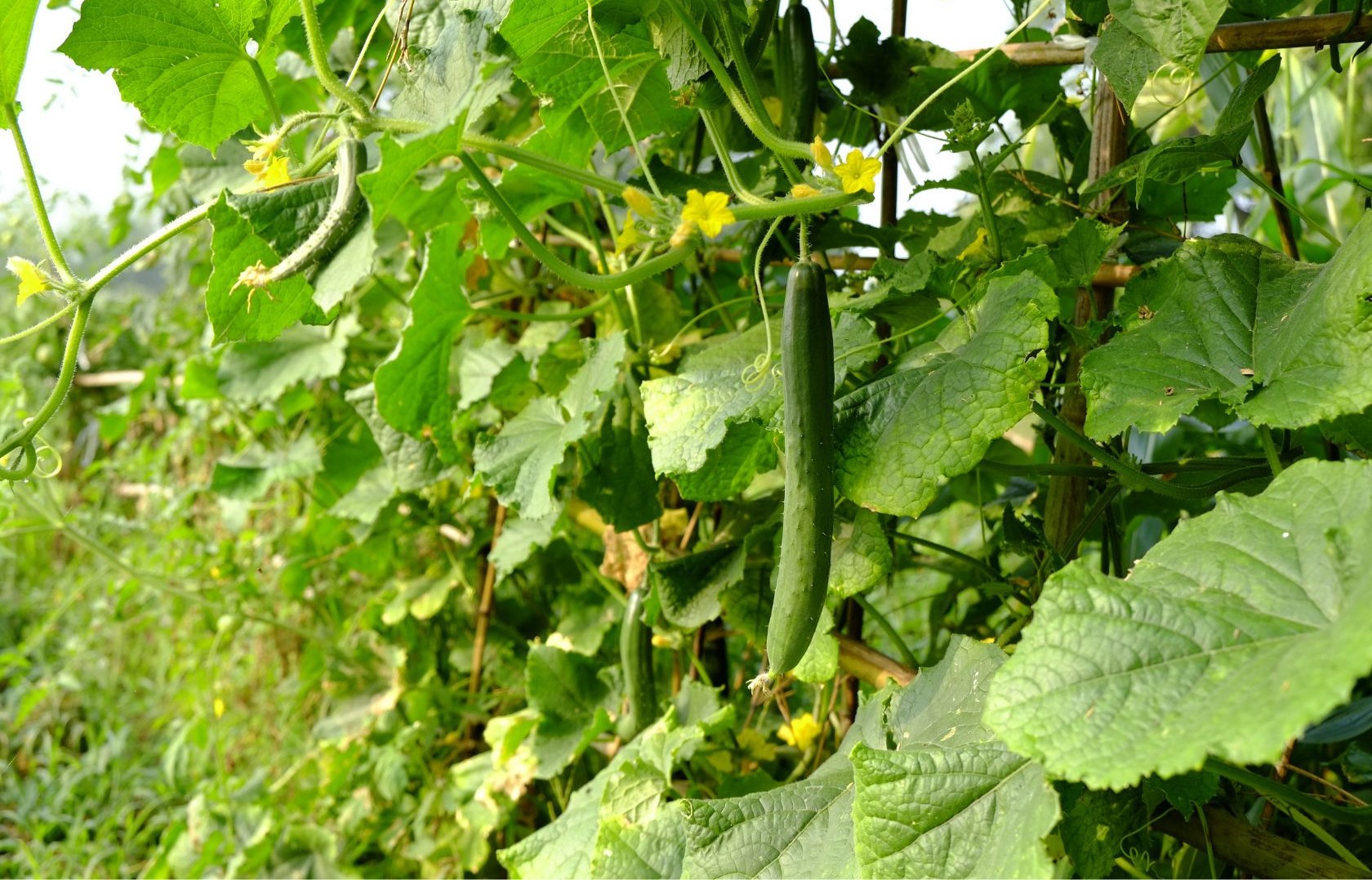Cucumber Fertilization Requirements and Methods

This post is also available in:
This post is also available in:
![]() Español (Spanish)
Español (Spanish) ![]() Français (French)
Français (French) ![]() Deutsch (German)
Deutsch (German) ![]() हिन्दी (Hindi)
हिन्दी (Hindi) ![]() Ελληνικά (Greek)
Ελληνικά (Greek)
Cucumbers need fertile soils rich in organic matter in order to thrive. However, usually, there is a need for external input like fertilizers to support the nutrient needs of cucumber throughout its growth period and maximize its yields. Cucumber plants need either organic fertilizers, such as manures and compost, or inorganic materials, such as chemical fertilizers. Combining organic and inorganic fertilizers will provide the best growth potential (1). It is crucial to perform a soil analysis test to adjust the fertilization program based on the needs and characteristics of each field.
Cucumber fertilization requirements – Cucumber nutrient needs
Cucumber fertilization schedule
The general recommendation for an average expected yield of 30 tons of cucumber per hectare in open field cultivation is 50-120 kg of N, 40-100 kg of P, and 80-180 kg of K per hectare (45-107 lb N, 36-90 lb P and 71-160 lb K per acre. Usually, N is applied early in the season and in multiple applications, phosphorus in 1 dose right before planting and K a bit later (to be available after 30-55 days after planting).
The cucumber fertilization program usually starts before planting by applying and incorporating 12 tons of compost or well-rotted manure per hectare (or up to 40 tons of farm yard manure (FYM) per hectare) (or 4.8 and up to 16 tons per acre) as basal fertilizer. Growers must apply these fertilizers into the soil several weeks before planting to give them the required time to decompose. In the case that the farmer chooses to apply manure that contains straw, sawdust, or similar materials, he/she should always combine it with a commercial nitrogen fertilizer.
Cucumber plants generally need nitrogen, phosphorus, potassium, calcium, magnesium, and sulfur to thrive. More specifically, sufficient amounts of available nitrogen during the first growth and establishment stages will assist the plant with vegetative growth. For this reason, most farmers apply a rich nitrogen basal fertilization (as mentioned above) and 35 kg of N per hectare (31 lb per acre) 20-30 days after sowing the crop. The advantage of a fertigation system (applying nitrogen through the drip system) is that we can apply smaller amounts of nitrogen on a more regular basis. This way, we significantly reduce the risk of excessive nitrogen application and, thus, the risk of nitrogen loss (leaching due to heavy rains). Moreover, fertigation is better than a broadcasting fertilizer system in the wider area because this way, less nitrogen will be available for weeds. In other words, nitrogen applied through fertigation (drip system) is limited only to the plant rows. The most known and widely used nitrogen fertilizers are urea, ammonium sulfate, calcium nitrate, and ammonium nitrate.
The farmers usually add all the phosphorus needed before sowing. If fertigation can be applied, phosphorus can be added from the crop establishment stage until harvesting, with the higher doses to be during the vegetative stage and from flowering initiation to first picking. On the other hand, potassium is mostly needed 30 to 55 days after sowing, with the plant needing to maximize during the last stages (final 10-20 days) and fruit enlargement.
While inorganic fertilizers can be side-dressed, organic ones, such as manures, are more difficult to apply, so they should be incorporated into the soil.
Whether you use fertigation or not, adding nitrogen, phosphorus, and potassium is always recommended after the annual soil test results (2).
Fertilization recommendations for greenhouse cucumber cultivation
When it comes to greenhouse cucumber cultivation, a fertigation system is mainly used. In this system, drip emitters release a fertilizer solution to the plant at a predetermined rate. We must remember that it’s important to keep the growing medium water saturated all day. The water supply rate depends on the growth stage of the cucumber (bigger plants require more water) and the season (lower temperatures require less irrigation). A greenhouse size 30 x 96 feet (10 x 30 m) requires approximately 500 to 1,000 gallons of water per day (3).
 (4)
(4)
However, these are just standard practices that should not be followed without doing your own research. Every field is different and has different needs. Checking the soil nutrients and pH is crucial before any fertilizer application. Leaf analysis is very important for identifying and correcting nutrient deficiencies in cucumber plants. You can always seek advice from a licensed agronomist.
References
- http://ipm.ucanr.edu/home-and-landscape/cucumber/cultural-tips/
- https://extension.okstate.edu/fact-sheets/cucumber-production.html
- https://www.aces.edu/blog/topics/crop-production/greenhouse-cucumber-production/
- https://agritech.tnau.ac.in/horticulture/horti_vegetables_cucumber.html
- https://ipm.ucanr.edu/home-and-landscape/cucumber/cultural-tips/index.html?src=307-pageViewHLS
Further reading
Cucumber History, Plant Information, Interesting facts, and Nutritional Value
How to grow cucumber for profit – Commercial cucumber cultivation
Principles for selecting the best Cucumber Variety
Cucumber Soil preparation, Soil, and Climate requirements, and Seeding requirements
Cucumber Irrigation – Water Requirements and Methods
Cucumber Fertilization Requirements and Methods
Weed Management in Cucumber Farming








































































